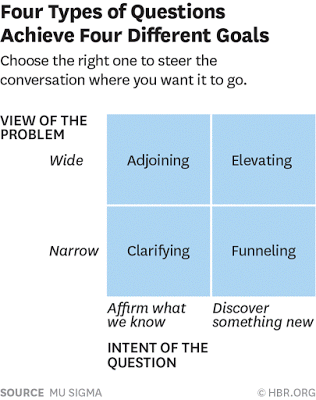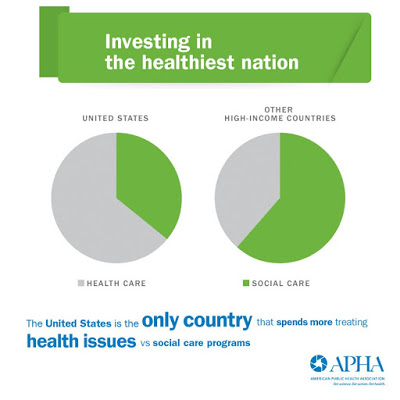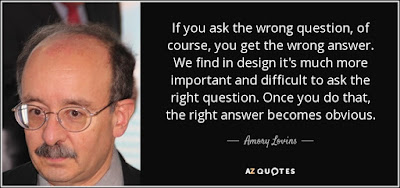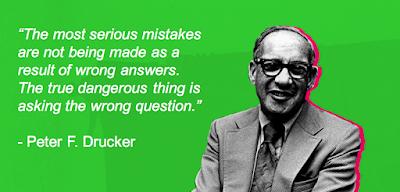A few things I read helped spur this. The first was a blog post entitled "Asking the Wrong Questions" by Benedict Evans, of VC firm Andreessen Horowitz, Mr. Evans looked at a couple of long range technology forecasts (from as long ago as 1964 and as recently as 1990), and pointed out how they both managed to miss several key developments. He attributed this to "this tendency to ask the wrong questions, or questions based on the wrong framework."
And we're still at it. Mr. Evans, whose background is mobile technologies, said that people are now doing a lot of speculating about what comes "after mobile," such as AR and VR. There are lots of good questions being asked, he noted, "But every time I think about these, I try to think what questions I'm not asking."
That, my friends, sounds like some pretty good advice, especially if you fancy yourself an innovator.
Then there was an interview with Warren Berger in Singularity Hub. Mr. Berger labels himself a "questionologist" -- a line of work I wish I'd thought of! -- and wrote a 2014 book A More Beautiful Question.
You have to admire his ability to turn a phrase; I love the notion of a "beautiful" question.
Mr. Berger defined a beautiful question as "an ambitious yet actionable question that can shift the way we think about something and may serve as a catalyst for change." As he further explained:
- “Ambitious” because we have to ask bold questions to innovate
- “Actionable” because big questions we can’t do anything about don’t lead to change.
- Critically, the question has to cause a mental shift—it makes you step back and say, “Hmmm, that’s interesting. I hadn’t really thought about this question before, and I want to explore it further.”

He sees these kind of questions as important not just for technological innovation, but even basic questions like "what business am I in" (something, for example, the folks at Snap have recently been asking, with some surprising answers). He further suggests organizations should turn mission statements into mission questions, to remind people to keep questioning. And, of course, he urges that leaders foster a culture of inquiry, without demanding immediate answers to every question.
One of Mr. Berger's favorite examples is how the Polaroid instant camera came about because founder/CEO Edwin Land's three-year-old daughter asked why they had to wait to see the picture he'd just taken. As Land later recounted, “I thought, ‘Why not? Why not design a picture that can be developed right away?’”
One could argue that Polaroid's downfall came because it stopped asking "beautiful" questions.
In 2015, Tom Pohlmann and Neethi Mary Thomas, of decision science firm Mu Sigma, wrote in Harvard Business Review that we need to "relearn the art of asking questions. They claim that "proper questioning" has become a "lost art." They lament that, while most of small children's conversations consist of questions, the opposite is true for adults, and blame this on educational and workplace environments that reward answers, not questions.

I suspect that too many questions in most organizations would be considered "clarifying," and not very many at all would be classified in any of the other three quadrants. The authors agree with Mr. Berger that leaders need to encourage people to ask more questions, because: "In order to make the right decisions, people need to start asking the questions that really matter."



